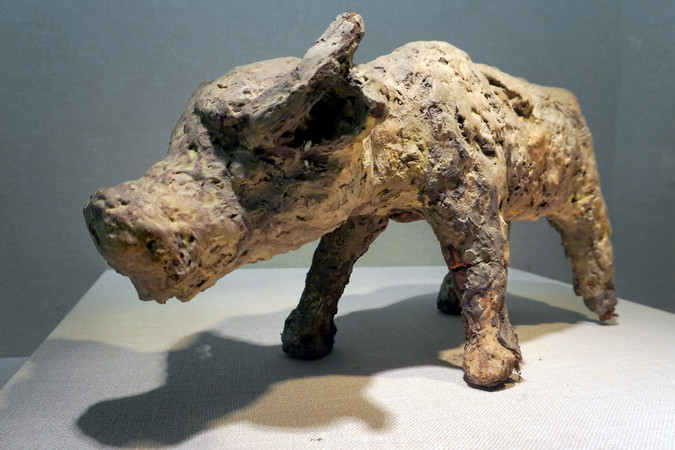For the past four years,关键字1 NASA's Perseverancerover has rambled over a region of Marswhere scientists say a strong river once emptied into a crater, creating a large delta.
But for that to have happened, a lot of waterwould have gushed — something difficult to explain if the Red Planet were always frozen.
Computer simulations show that ancient Mars likely experienced regular rain and snow, which helped shape vast networks of river valleys and lakes. The distribution of these land features lines up better with precipitation models than merely the effects of melted ice caps, according to a new paperpublished in the Journal of Geophysical Research: Planets.
You May Also LikeThe research, performed by geologists at the University of Colorado in Boulder, argues that our planetary neighbor, on average 140 million miles away in space, was warm and wet billions of years ago, challenginga long-held belief that early Mars was mostly cold and icy.
Most scientists agree that at least some water existed on the surface during a period about 4 billion years ago, but where the water came from has been up for debate, said Amanda Steckel, who led the studyas a doctoral student.
"We see these valleys beginning at a large range of elevations," Steckel said in a statement. "It’s hard to explain that with just ice."
SEE ALSO: A NASA rover just exposed something on Mars that eluded orbiters NASA's Mars Global Surveyor spacecraft created this topographical map of a region near the planet's equator with its Mars Orbiter Laser Altimeter. Credit: NASA
NASA's Mars Global Surveyor spacecraft created this topographical map of a region near the planet's equator with its Mars Orbiter Laser Altimeter. Credit: NASA The researchers created a digital version of part of Mars and tested different climate scenarios. In some computer simulations, they added widespread rain or snow. For others, they only tried melting down polar ice. Then, they used the software to simulate what would happen if that water flowed for thousands of years.
Mashable Light Speed Want more out-of-this world tech, space and science stories? Sign up for Mashable's weekly Light Speed newsletter. By clicking Sign Me Up, you confirm you are 16+ and agree to our Terms of Use and Privacy Policy. Thanks for signing up! Their goal was to determine whether ancient Mars may have had a more Earth-like climate, at least for a while.
The results showed when precipitation was part of the climate, valleys and streams formed in many different regions at varying elevation points. When water came only from melted ice, the valleys mostly formed in the highlands, in close proximity to where the ice caps would have been.
The team compared the simulation data to real images from NASA spacecraft that have observed Mars from orbit. The patterns created by rain or snow more closely matched what is actually seen on the Martian surface.
 Mars' oldest terrains appear to have eroded into branching valleys, similar to regions of Earth where rain and snow have caused runoff. Credit: NASA / JPL-Caltech / Univ. of Arizona
Mars' oldest terrains appear to have eroded into branching valleys, similar to regions of Earth where rain and snow have caused runoff. Credit: NASA / JPL-Caltech / Univ. of Arizona "Water from these ice caps starts to form valleys only around a narrow band of elevations," Steckel said. "Whereas if you have distributed precipitation, you can have valley heads forming everywhere."
Related Stories- A NASA rover just exposed something on Mars that eluded orbiters
- NASA's rovers just found similar gnarly rocks on opposite sides of Mars
- The best telescopes for gazing at stars and solar eclipses in 2024
- Past life on Mars? Here's what new NASA evidence points to.
- Scientists found huge beaches on Mars likely from a long gone ocean
Today, snow occasionally falls on Mars, but only in the coldest extremes, according to NASA: at the poles and under cloud cover at night. So far there's no photographic evidence of Martian snowfall — clouds obscure the cameras on spacecraft — but other instruments are capable of detecting it.
The Mars Reconnaissance Orbiter, for example, has the Mars Climate Sounder, which has collected data on carbon dioxide snow — aka dry ice — as it fell to the ground. The Phoenix landeralso used a laser-based tool to spot snow made of water near the Martian north pole in 2008.
The team still doesn't fully grasp how Mars could have stayed warm enough for rain or snow, especially since the young sunwas about 25 percent dimmer than it is today. Despite the mystery, geologist and study coauthor Brian Hynek says without rain, landforms like Perseverance's Jezero Craterjust don't make sense. The dried delta, for example, features scattered boulders.
"You’d need meters deep of flowing water to deposit those kinds of boulders," he said.
顶: 684踩: 85372
Scientists find subtle clues ancient Mars had rainy days, too
人参与 | 时间:2025-06-12 22:18:01
相关文章
- 陈奕迅女儿将出道 签约华纳娱乐
- 2023年山东省莱芜中考作文题目:今朝晴朗可喜
- 大局已定!世亚预收官战多队缺乏战意或出冷
- 爸爸游戏氪金2万元 谎称3岁孩子所为要求退款:被罚1万
- 北京马术协会“骑悦”BYRS星讲堂·沙龙活动圆满结束
- 渤海油气开发新突破!这个大气田累产天然气超10亿立方米
- 6 Places to See Amazing Animal Migrations This Fall
- ZoomIn: ศึก "สุกี้เดือด" สงครามราคา เกมนี้ใครเจ็บตัวสุด? : อินโฟเควสท์
- Best AirPods deal: Get Apple AirPods Pro 2 for under $170
- 娱乐:一米小侏儒,强开杨蜜白露






评论专区